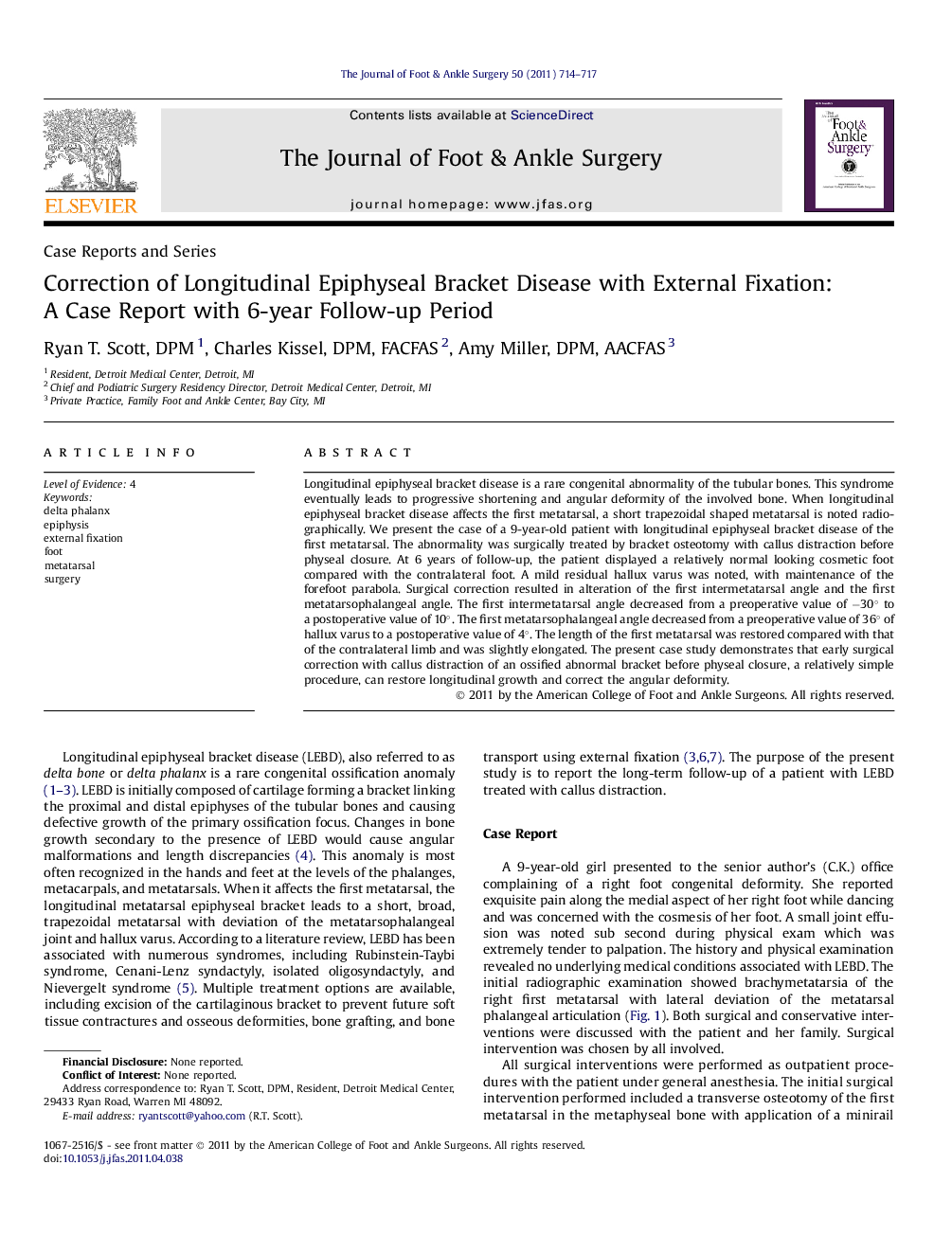| Article ID | Journal | Published Year | Pages | File Type |
|---|---|---|---|---|
| 2720120 | The Journal of Foot and Ankle Surgery | 2011 | 4 Pages |
Longitudinal epiphyseal bracket disease is a rare congenital abnormality of the tubular bones. This syndrome eventually leads to progressive shortening and angular deformity of the involved bone. When longitudinal epiphyseal bracket disease affects the first metatarsal, a short trapezoidal shaped metatarsal is noted radiographically. We present the case of a 9-year-old patient with longitudinal epiphyseal bracket disease of the first metatarsal. The abnormality was surgically treated by bracket osteotomy with callus distraction before physeal closure. At 6 years of follow-up, the patient displayed a relatively normal looking cosmetic foot compared with the contralateral foot. A mild residual hallux varus was noted, with maintenance of the forefoot parabola. Surgical correction resulted in alteration of the first intermetatarsal angle and the first metatarsophalangeal angle. The first intermetatarsal angle decreased from a preoperative value of −30° to a postoperative value of 10°. The first metatarsophalangeal angle decreased from a preoperative value of 36° of hallux varus to a postoperative value of 4°. The length of the first metatarsal was restored compared with that of the contralateral limb and was slightly elongated. The present case study demonstrates that early surgical correction with callus distraction of an ossified abnormal bracket before physeal closure, a relatively simple procedure, can restore longitudinal growth and correct the angular deformity.
